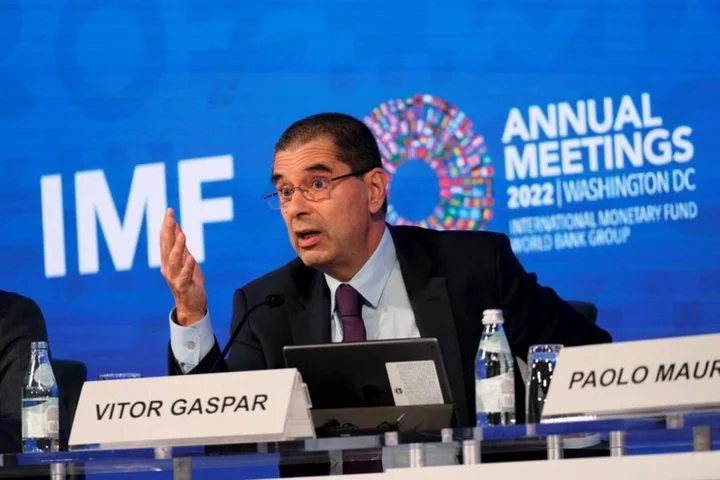By David Lawder
MARRAKECH, Morocco The U.S. and China will both need to make major changes to put their medium-term debt and deficit on a sustainable path, International Monetary Fund Fiscal Affairs Director Vitor Gaspar said on Wednesday.
Continuing along their projected fiscal paths will ultimately cause difficulties for the world's two largest economies, Gaspar told Reuters in an interview.
The U.S. and China are fueling a projected return to higher debt levels after two years of falling debt-to-GDP ratios as a post-COVID growth surge fades.
"If you look at what is exactly driving the U.S. and China, you would say it's large and persistent budget deficits on the order of 6% to 7% of GDP throughout the period up to 2028," Gaspar said. "Growth has slowed and the medium-term prospects are the weakest in some time" for both countries.
The IMF's Fiscal Monitor, released on Oct. 2, shows that the U.S.'s and China's total non-financial public and private debt-to-GDP rates have converged at about 270% of GDP, with the U.S. making up 30% of the global total and China 20%.
DEFICITS RISING
Gaspar said the challenge for the United States was persistently high and growing budget deficits. The Congressional Budget Office (CBO) projects U.S. deficits to approach pandemic-era levels by the end of the decade without tax and spending law changes, led by rising health care, pension and debt interest costs.
"At the projected pace, the public debt ratio, in the U.S., would be above 140 percent of GDP by the end of the decade," Gaspar said, compared to 110% in 2022.
To fix this problem, Washington will need to make difficult choices, including higher taxes on wealthy individuals, ending tax breaks for fossil fuel production and raising or eliminating the income cap on Social Security taxes, Gaspar said.
The U.S. budget process is broken, leading to unnecessary funding crises, Gaspar said, adding that the country should do away with its debt ceiling and adopt stronger budgeting rules, with a bigger role for the CBO.
GROWTH FADES
China faces different challenges, the largest of which is slowing economic growth.
Gaspar said Chinese authorities need to pay more attention to growing debt at the sub-national government level and in local financing vehicles, and work to reduce the country's long dependence on real estate and infrastructure investment for growth.
"The challenge for China is growth, stability and innovation," Gaspar said.
He added that China needs a new growth model to shift from exports and investment to domestic demand, and this will require a more generous social safety net so consumers can spend more with less precautionary savings.
China has managed innovation in electric vehicles and alternative energy products, and that can aid its transition. "China has ample policy space, it has multiple options," he said.
(Reporting by David Lawder; editing by John Stonestreet)

